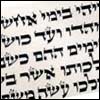Did you know that Vashti, the first queen of Persian emperor Achashverosh, was the great-granddaughter of Babylonian emperor Nebuchadnezzar, who destroyed the first Holy Temple in Jerusalem? Or that Haman's decree mandating the destruction of the Jews was never actually revoked, and that Achashverosh merely issued a second decree giving the Jews the right to defend themselves?
Those little-known points of trivia are some of the more interesting pieces of information that can be found on Chabad.org's newly revamped mega-section devoted to the upcoming holiday of Purim. Beginning this year on March 20, the holiday commemorates the Jewish people's triumph over a Persian decree of death in 356 B.C.E.
The four mitzvahs associated with Purim are reading the Scroll of Esther, called the megillah, giving gifts to the poor, exchanging gifts of food with friends and partaking of a festive meal. Traditionally people dress in costumes.
Featuring an easy-to-navigate design and a wealth of new content, VirtualPurim.org offers a step-by-step guide for celebrating Purim as well as scholarly articles, stories, audio classes, videos and a database of holiday events all over the world. The site is also hosting the world's largest Purim costume contest, in which visitors can upload their own pictures and rate the pictures of other contestants.
For those unfamiliar with the holiday or needing a little refresher course, the site contains an easy-to-digest explanation of Purim.
The holiday's name literally means "lots," states the site's FAQ section. "The name commemorates the lots that Haman cast to choose the day most suitable for the destruction of the Jews."
Events, however, quickly took on a divinely-ordained sequence leading to the Jewish people's eventual triumph. G‑d's name however, does not appear once in Esther, making it the only book of the Bible where G‑d is not mentioned.
A trivia page offers little-known facts about Vashti and other Purim characters. The king's advisor Mordechai, for instance, was a very old man by the time the events recorded in the megillah take place. Almost 80 years before, in fact, he had been appointed to the Sanhedrin, Jerusalem's highest court of Jewish law.
Several impressed visitors have left comments on the site.
"Thank you for this informative explanation of such a wonderful story," writes Susan Highams from the Netherlands.
"I began to read the story of Esther [and] I was immediately taken away with the detail," writes one commenter from London who perused a detailed treatment of the Purim story by Rabbi Naftali Silberberg. "I have often read the book of Esther, but reading this account is quite refreshing. Thank you for your wonderful site."








Start a Discussion